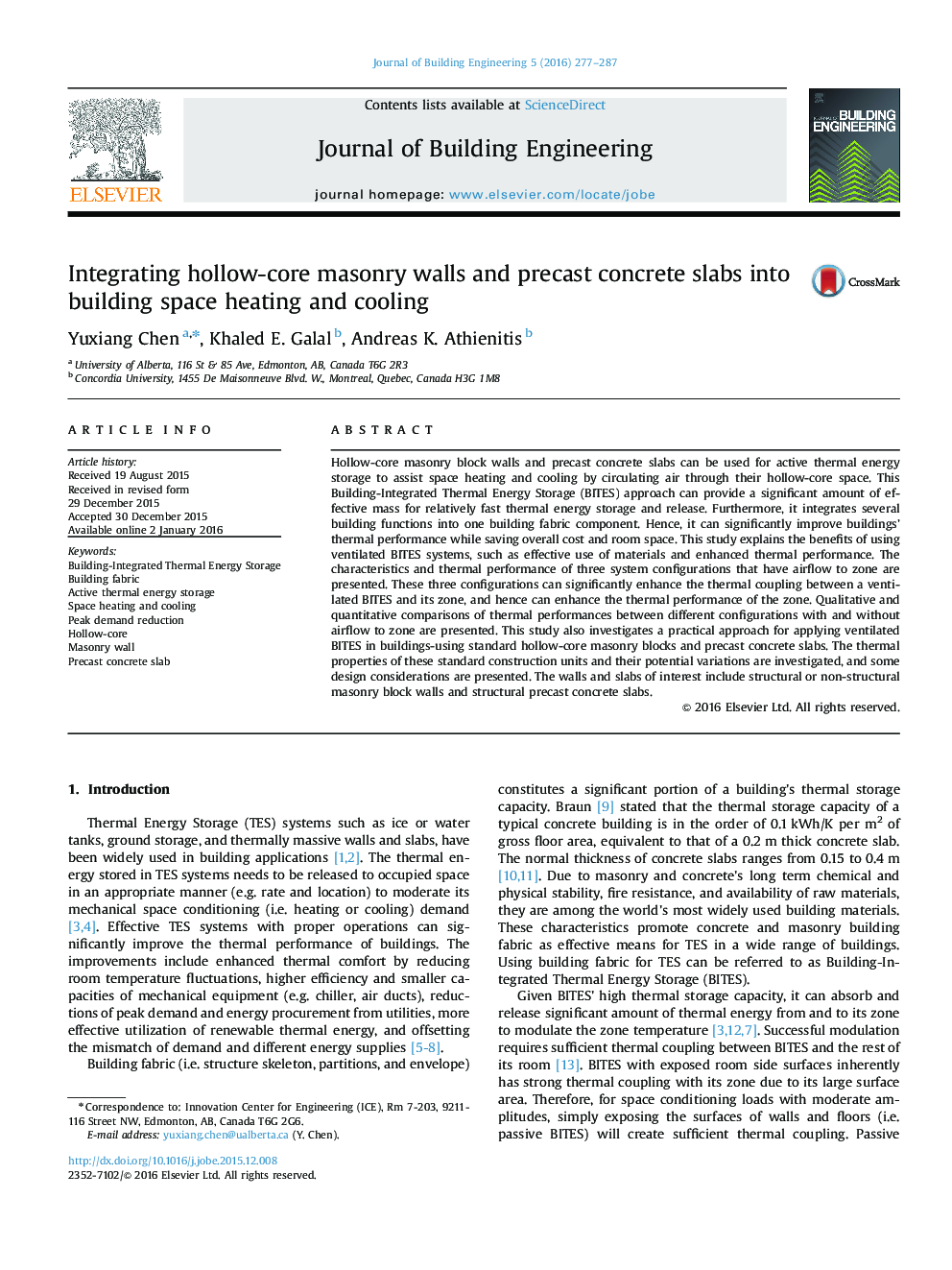| کد مقاله | کد نشریه | سال انتشار | مقاله انگلیسی | نسخه تمام متن |
|---|---|---|---|---|
| 283858 | 509118 | 2016 | 11 صفحه PDF | دانلود رایگان |
• Benefits of using ventilated building-integrated thermal energy storage (BITES).
• Approaches for using hollow-core walls and precast slabs as ventilated BITES.
• Three configurations of ventilated BITES with airflow to zone.
• Comparisons between different BITES systems and configurations.
Hollow-core masonry block walls and precast concrete slabs can be used for active thermal energy storage to assist space heating and cooling by circulating air through their hollow-core space. This Building-Integrated Thermal Energy Storage (BITES) approach can provide a significant amount of effective mass for relatively fast thermal energy storage and release. Furthermore, it integrates several building functions into one building fabric component. Hence, it can significantly improve buildings’ thermal performance while saving overall cost and room space. This study explains the benefits of using ventilated BITES systems, such as effective use of materials and enhanced thermal performance. The characteristics and thermal performance of three system configurations that have airflow to zone are presented. These three configurations can significantly enhance the thermal coupling between a ventilated BITES and its zone, and hence can enhance the thermal performance of the zone. Qualitative and quantitative comparisons of thermal performances between different configurations with and without airflow to zone are presented. This study also investigates a practical approach for applying ventilated BITES in buildings-using standard hollow-core masonry blocks and precast concrete slabs. The thermal properties of these standard construction units and their potential variations are investigated, and some design considerations are presented. The walls and slabs of interest include structural or non-structural masonry block walls and structural precast concrete slabs.
Journal: Journal of Building Engineering - Volume 5, March 2016, Pages 277–287
